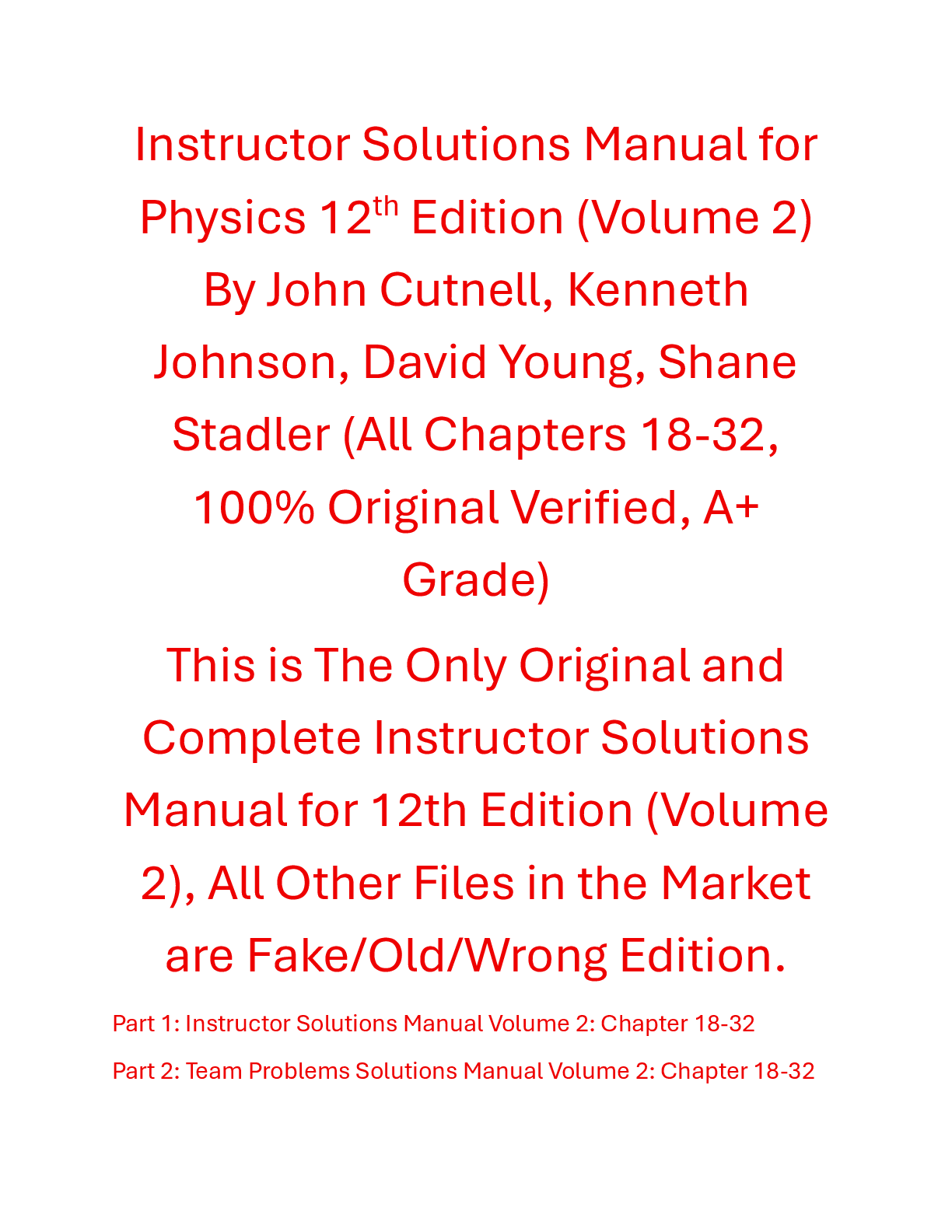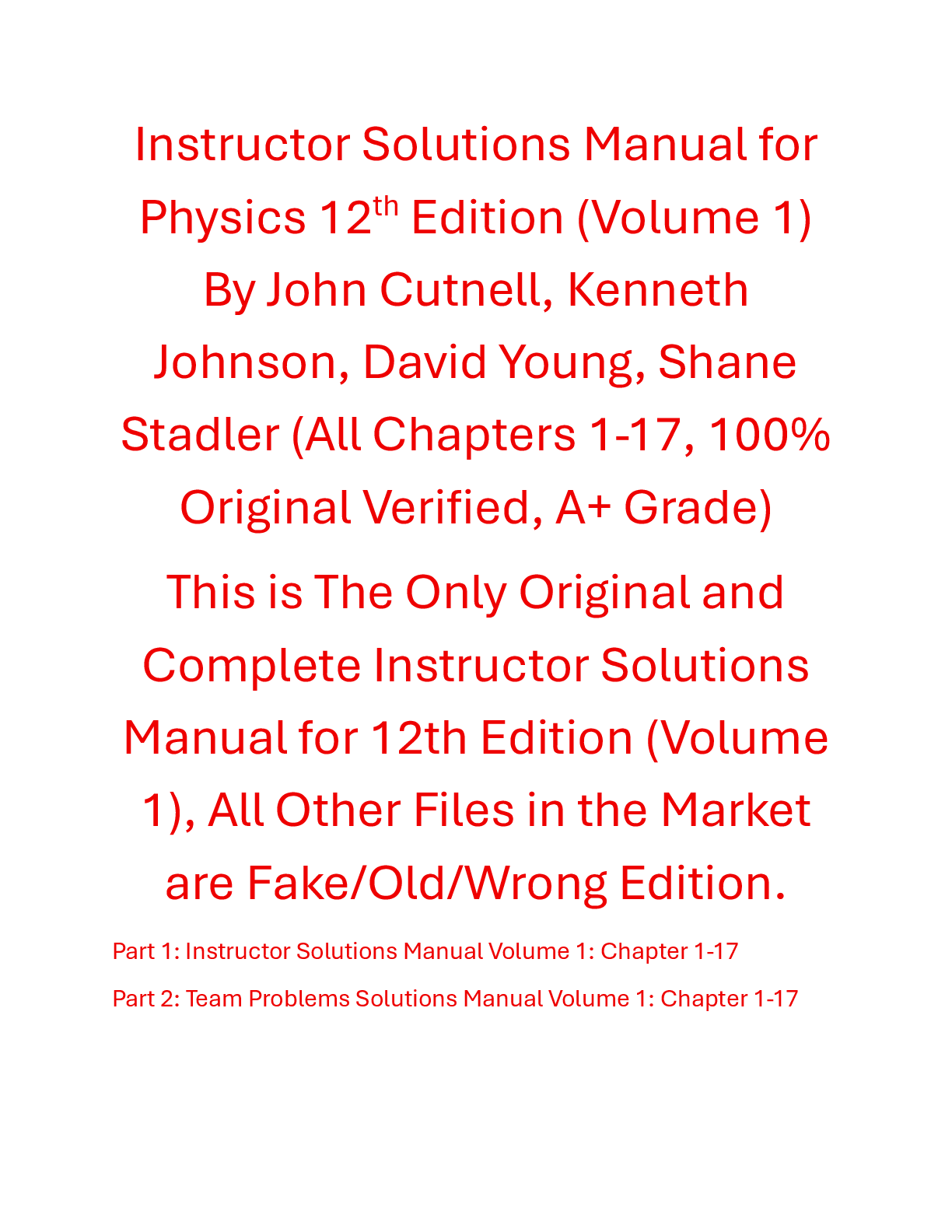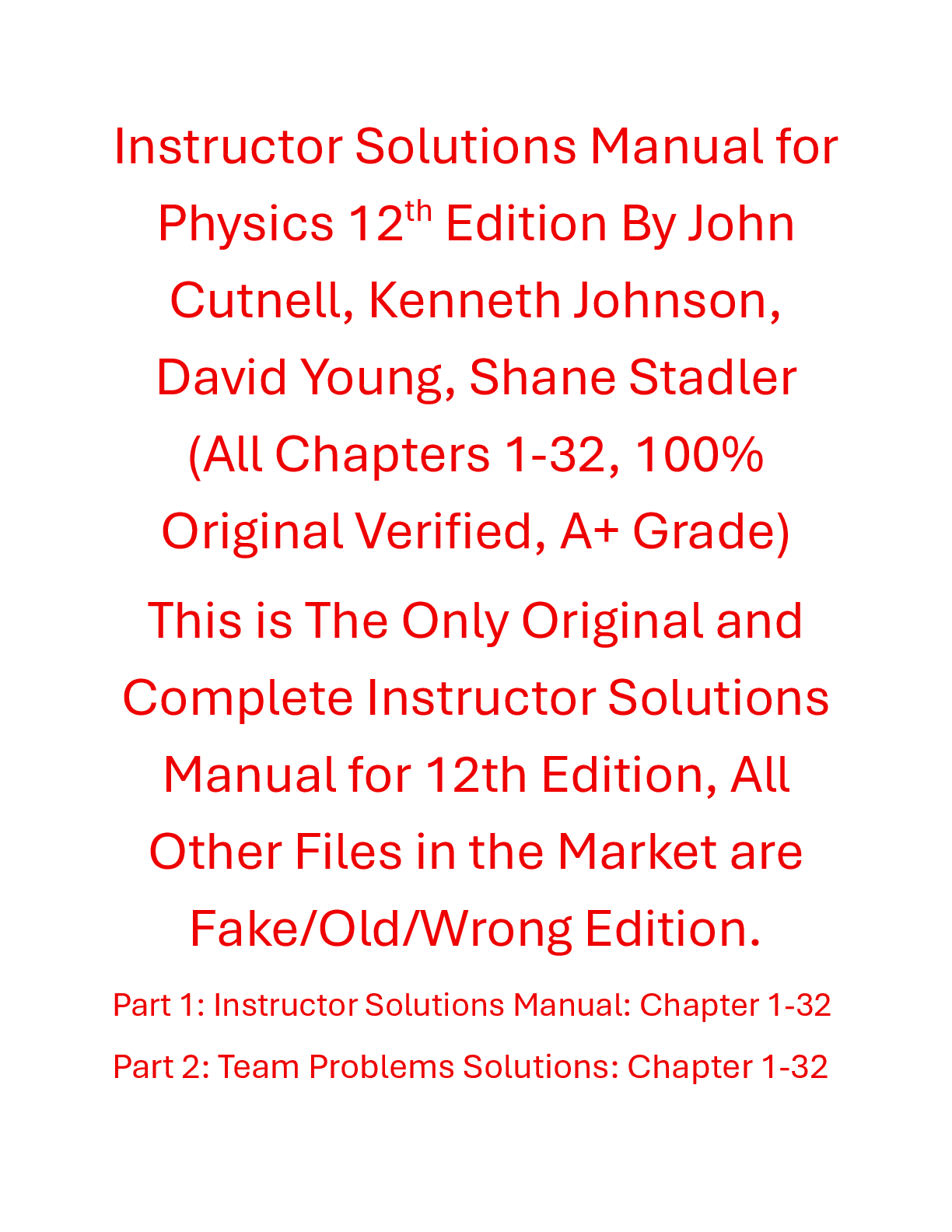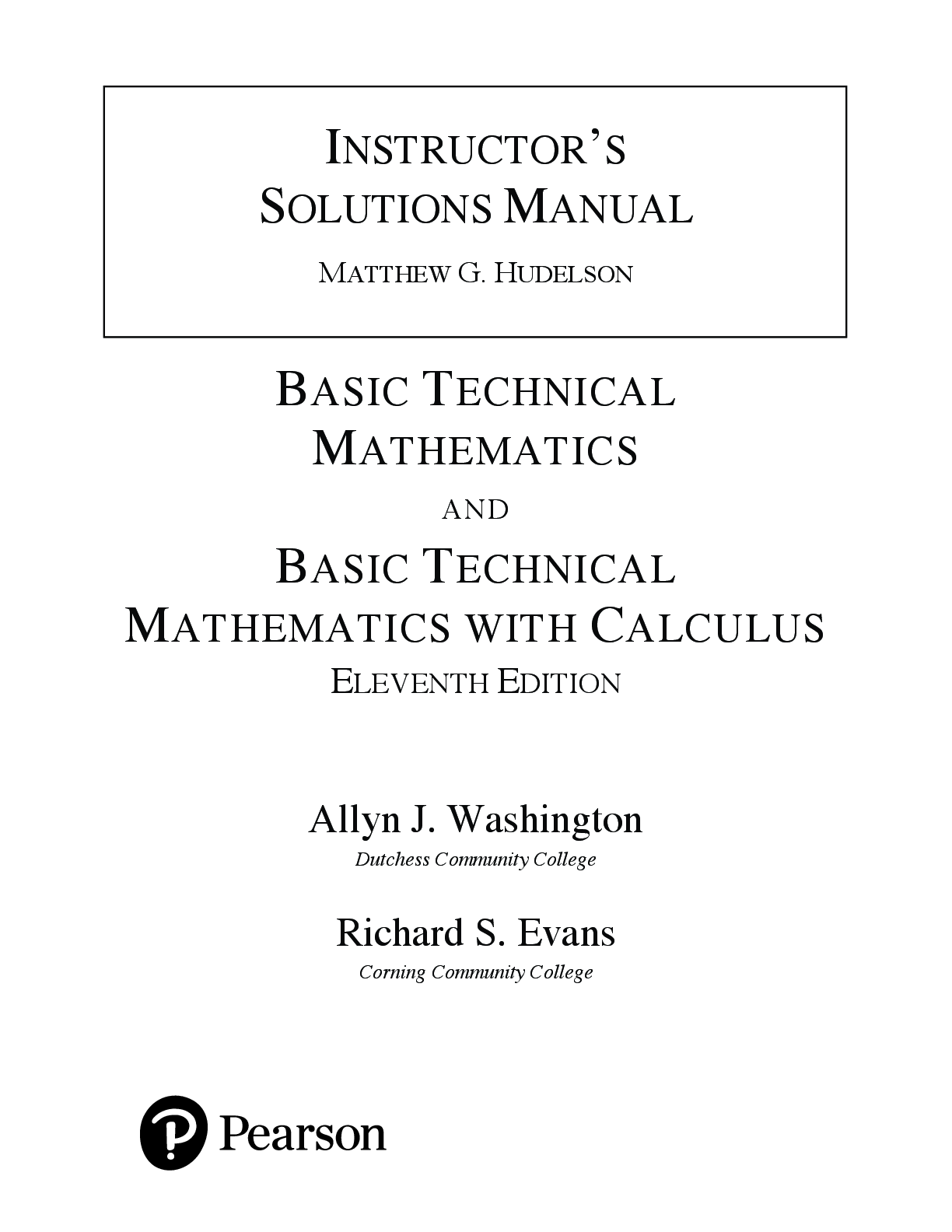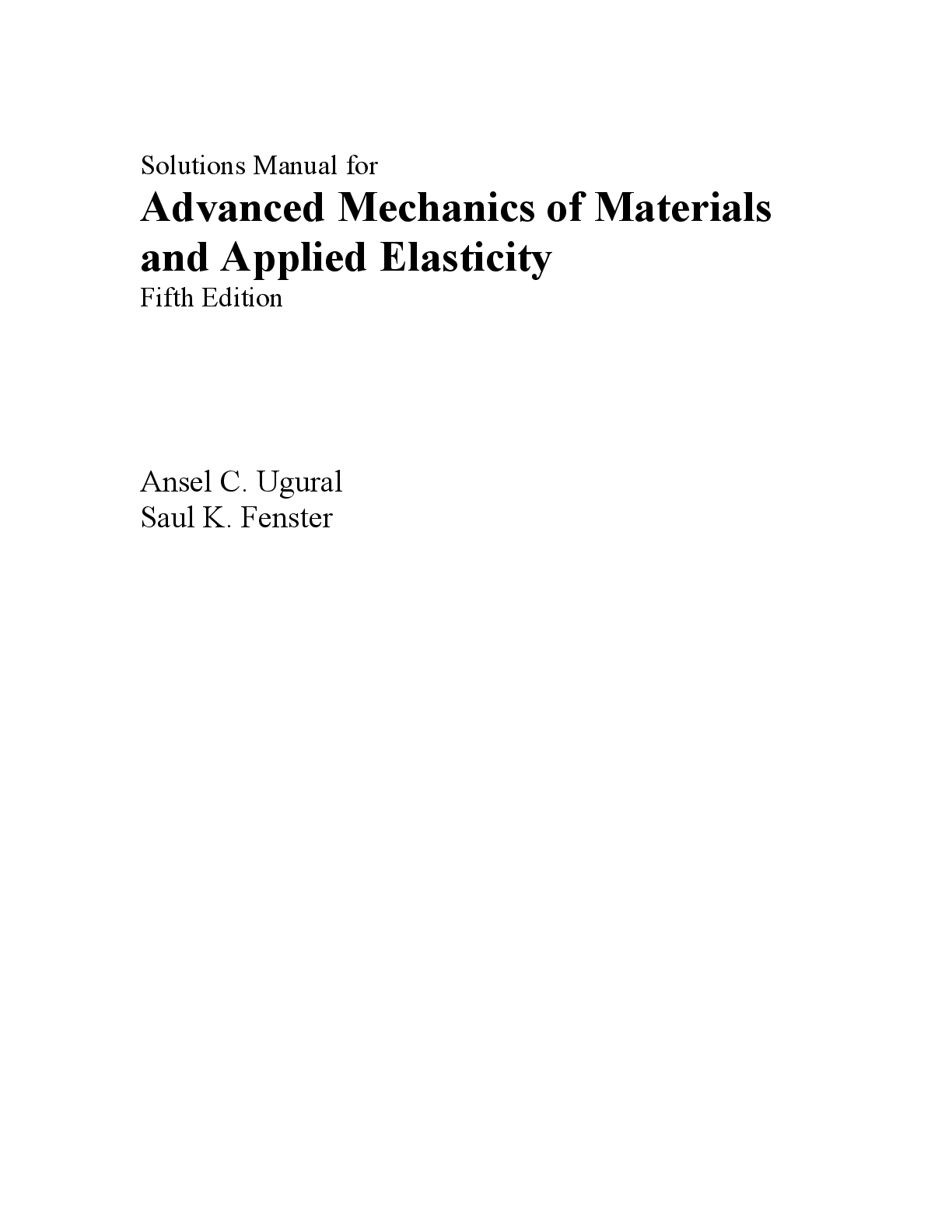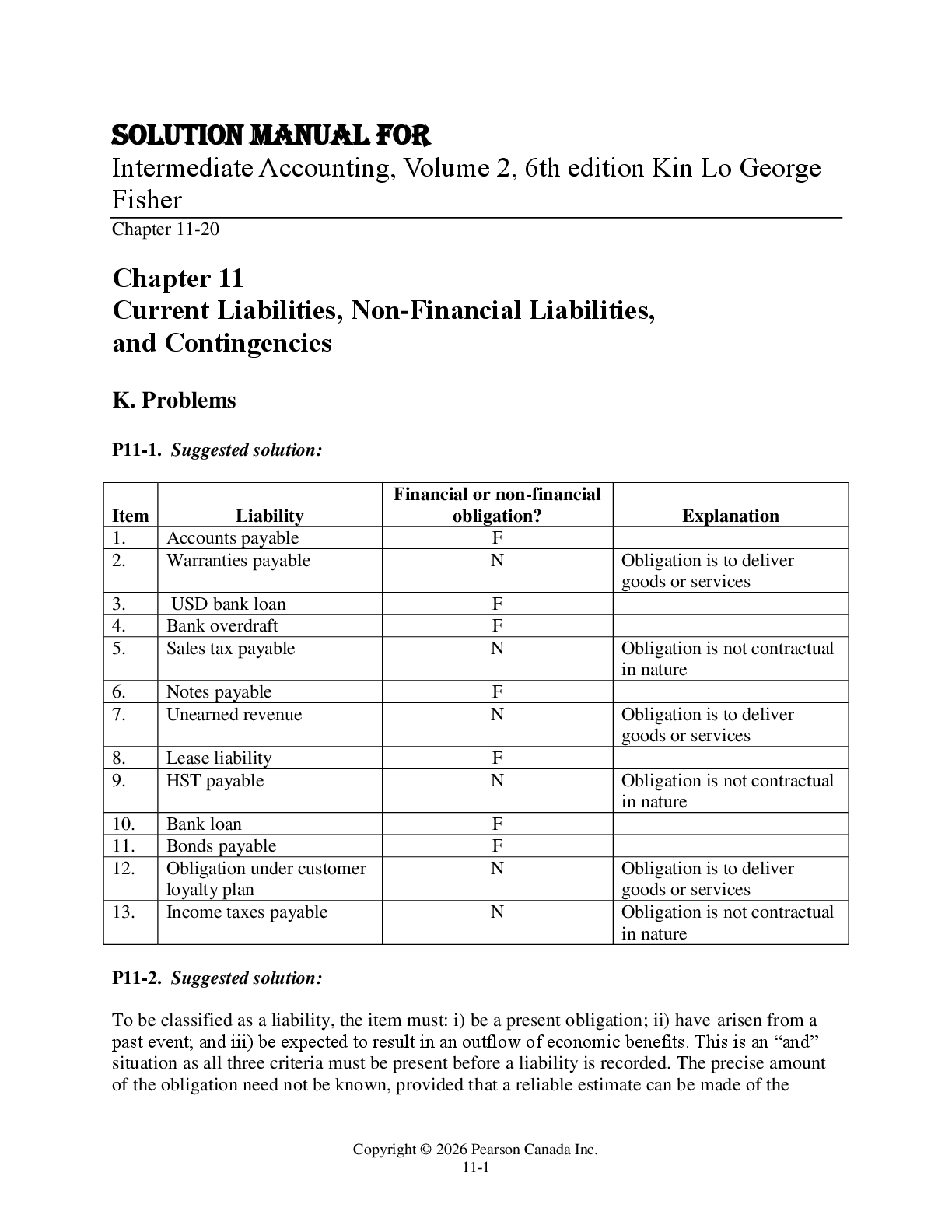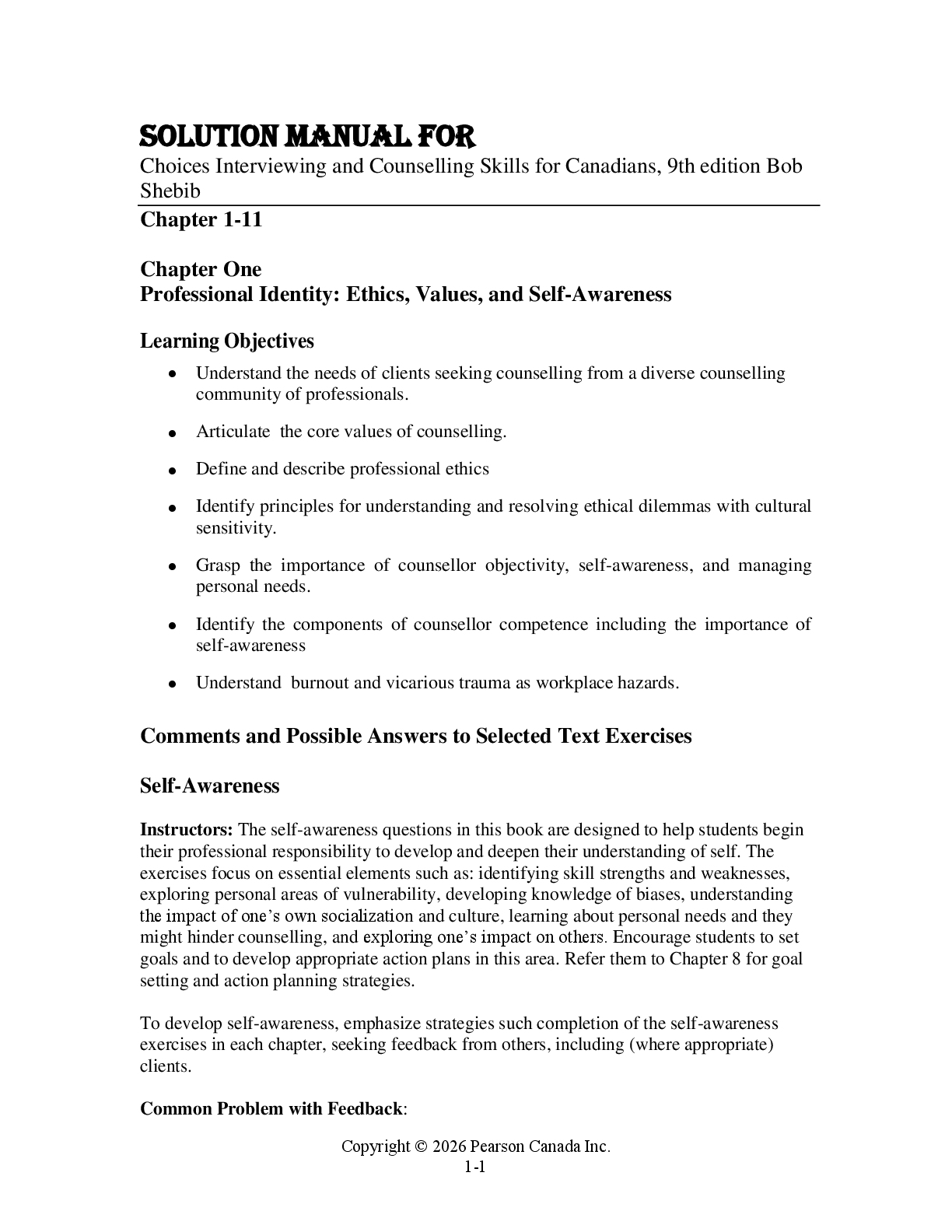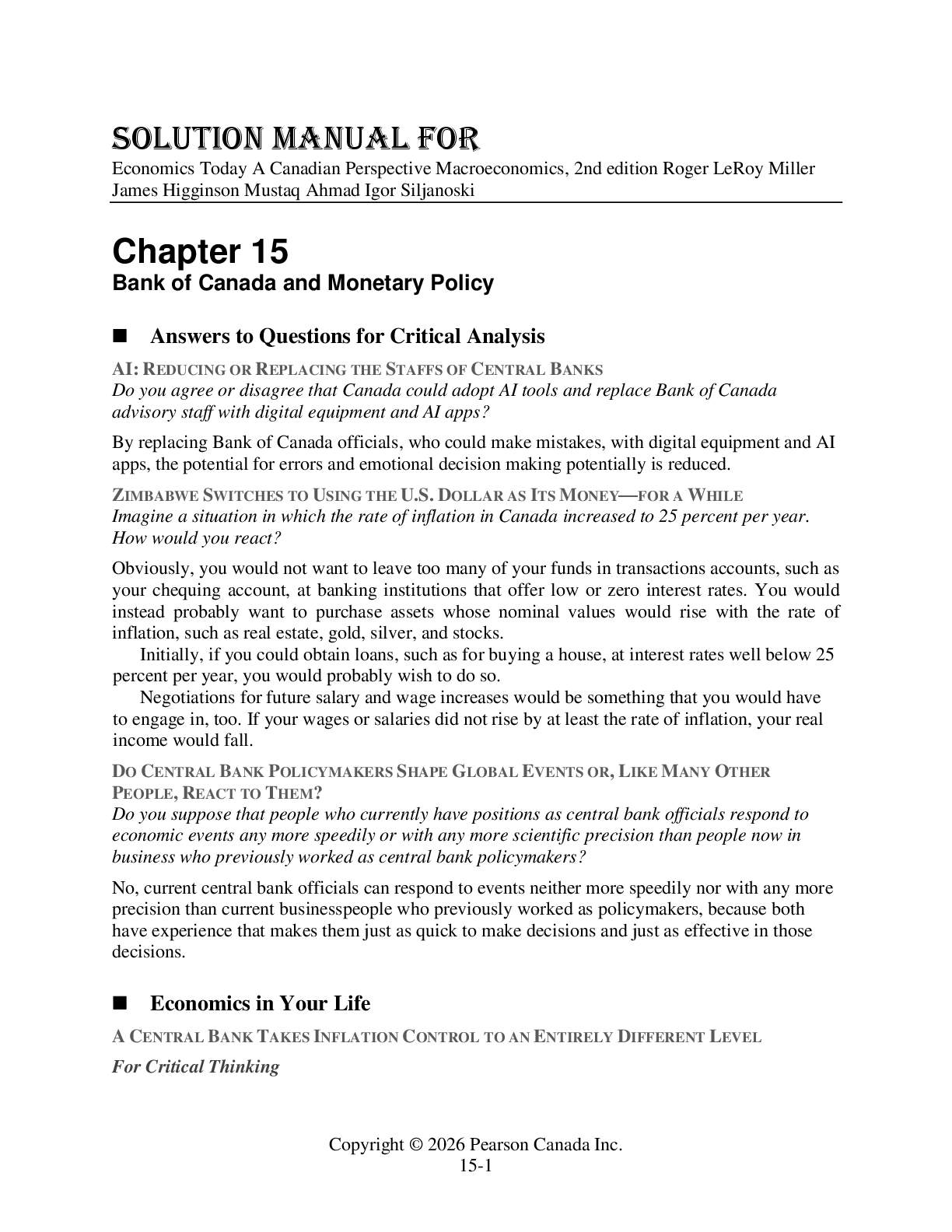Statistics > SOLUTIONS MANUAL > Second Course in Statistics, A Regression Analysis, 8th edition By William Mendenhall, (Solutions Ma (All)
Second Course in Statistics, A Regression Analysis, 8th edition By William Mendenhall, (Solutions Manual)
Document Content and Description Below
Table of Contents A Review of Basic Concepts (Optional) 1.1 Statistics and Data 1.2 Populations, Samples, and Random Sampling 1.3 Describing Qualitative Data 1.4 Describing Quantitative Data Grap ... hically 1.5 Describing Quantitative Data Numerically 1.6 The Normal Probability Distribution 1.7 Sampling Distributions and the Central Limit Theorem 1.8 Estimating a Population Mean 1.9 Testing a Hypothesis About a Population Mean 1.10 Inferences About the Difference Between Two Population Means 1.11 Comparing Two Population Variances Introduction to Regression Analysis 2.1 Modeling a Response 2.2 Overview of Regression Analysis 2.3 Regression Applications 2.4 Collecting the Data for Regression Simple Linear Regression 3.1 Introduction 3.2 The Straight-Line Probabilistic Model 3.3 Fitting the Model: The Method of Least Squares 3.4 Model Assumptions 3.5 An Estimator of σ2 3.6 Assessing the Utility of the Model: Making Inferences About the Slope β1 3.7 The Coefficient of Correlation 3.8 The Coefficient of Determination 3.9 Using the Model for Estimation and Prediction 3.10 A Complete Example 3.11 Regression Through the Origin (Optional) Case Study 1: Legal Advertising–Does It Pay? Multiple Regression Models 4.1 General Form of a Multiple Regression Model 4.2 Model Assumptions 4.3 A First-Order Model with Quantitative Predictors 4.4 Fitting the Model: The Method of Least Squares 4.5 Estimation of σ2, the Variance of ε 4.6 Testing Overall Model Utility: The Analysis of Variance F-Test 4.7 Inferences About the Individual β Parameters 4.8 Multiple Coefficients of Determination: R2 and R2adj 4.9 Using the Model for Estimation and Prediction 4.10 An Interaction Model with Quantitative Predictors 4.11 A Quadratic (Second-Order) Model with a Quantitative Predictor 4.12 More Complex Multiple Regression Models (Optional) 4.13 A Test for Comparing Nested Models 4.14 A Complete Example Case Study 2: Modeling the Sale Prices of Residential Properties in Four Neighborhoods Principles of Model-Building 5.1 Introduction: Why Model Building is Important 5.2 The Two Types of Independent Variables: Quantitative and Qualitative 5.3 Models with a Single Quantitative Independent Variable 5.4 First-Order Models with Two or More Quantitative Independent Variables 5.5 Second-Order Models with Two or More Quantitative Independent Variables 5.6 Coding Quantitative Independent Variables (Optional) 5.7 Models with One Qualitative Independent Variable 5.8 Models with Two Qualitative Independent Variables 5.9 Models with Three or More Qualitative Independent Variables 5.10 Models with Both Quantitative and Qualitative Independent Variables 5.11 External Model Validation Variable Screening Methods 6.1 Introduction: Why Use a Variable-Screening Method? 6.2 Stepwise Regression 6.3 All-Possible-Regressions-Selection Procedure 6.4 Caveats Case Study 3: Deregulation of the Intrastate Trucking Industry Some Regression Pitfalls 7.1 Introduction 7.2 Observational Data Versus Designed Experiments 7.3 Parameter Estimability and Interpretation 7.4 Multicollinearity 7.5 Extrapolation: Predicting Outside the Experimental Region 7.6 Variable Transformations Residual Analysis 8.1 Introduction 8.2 Plotting Residuals and Detecting Lack of Fit 8.3 Detecting Unequal Variances 8.4 Checking the Normality Assumption 8.5 Detecting Outliers and Identifying Influential Observations 8.6 Detection of Residual Correlation: The Durbin-Watson Test Case Study 4: An Analysis of Rain Levels in California Case Study 5: Factors Affecting the Sale Price of Condominium Units Sold at Public Auction Special Topics in Regression (Optional) 9.1 Introduction 9.2 Piecewise Linear Regression 9.3 Inverse Prediction 9.4 Weighted Least Squares 9.5 Modeling Qualitative Dependent Variables 9.6 Logistic Regression 9.7 Poisson Regression 9.8 Ridge and Lasso Regression 9.9 Robust Regression 9.10 Nonparametric Regression Models Time Series Modeling and Forecasting 10.1 What is a Time Series? 10.2 Time Series Components 10.3 Forecasting Using Smoothing Techniques (Optional) 10.4 Forecasting: The Regression Approach 10.5 Autocorrelation and Autoregressive Error Models 10.6 Other Models for Autocorrelated Errors (Optional) 10.7 Constructing Time Series Models 10.8 Fitting Time Series Models with Autoregressive Errors 10.9 Forecasting with Time Series Autoregressive Models 10.10 Seasonal Time Series Models: An Example 10.11 Forecasting Using Lagged Values of the Dependent Variable (Optional) Case Study 6: Modeling Daily Peak Electricity Demands Principles of Experimental Design 11.1 Introduction 11.2 Experimental Design Terminology 11.3 Controlling the Information in an Experiment 11.4 Noise-Reducing Designs 11.5 Volume-Increasing Designs 11.6 Selecting the Sample Size 11.7 The Importance of Randomization The Analysis of Variance for Designed Experiments 12.1 Introduction 12.2 The Logic Behind an Analysis of Variance 12.3 One-Factor Completely Randomized Designs 12.4 Randomized Block Designs 12.5 Two-Factor Factorial Experiments 12.6 More Complex Factorial Designs (Optional) 12.7 Follow-Up Analysis: Tukey's Multiple Comparisons of Means 12.8 Other Multiple Comparisons Methods (Optional) 12.9 Checking ANOVA Assumptions Case Study 7: Voice Versus Face Recognition -- Does One Follow the Other? Appendix A: Derivation of the Least Squares Estimates of β0 and β1 in Simple Linear RegressionAppendix B: The Mechanics of a Multiple Regression Analysis A.1 Introduction A.2 Matrices and Matrix Multiplication A.3 Identity Matrices and Matrix Inversion A.4 Solving Systems of Simultaneous Linear Equations A.5 The Least Squares Equations and Their Solution A.6 Calculating SSE and s2 A.7 Standard Errors of Estimators, Test Statistics, and Confidence Intervals for β0, β1, ... , βk A.8 A Confidence Interval for a Linear Function of the β Parameters and for E(y) A.9 A Prediction Interval for Some Value of y to be Observed in the Future Appendix C: A Procedure for Inverting a MatrixAppendix D: Statistical Tables Table 1: Normal Curve Areas Table 2: Critical Values for Student's t Table 3: Critical Values for the F Statistic: F.10 Table 4: Critical Values for the F Statistic: F.05 Table 5: Critical Values for the F Statistic: F.025 Table 6: Critical Values for the F Statistic: F.01 Table 7: Critical Values for the Durbin-Watson d Statistic (α=.05) Table 8: Critical Values for the Durbin-Watson d Statistic (α=.01) Table 9: Critical Values for the X2-Statistic Table 10: Percentage Points of the Studentized Range, q(p,v), Upper 5% Table 11: Percentage Points of the Studentized Range, q(p,v), Upper 1% Appendix E: File Layouts for Case Study Data Sets Answers to Odd Numbered Exercises Index Online: SAS Tutorial SPSS Tutorial MINITAB Tutorial R Tutorial [Show More]
Last updated: 2 years ago
Preview 1 out of 437 pages

Buy this document to get the full access instantly
Instant Download Access after purchase
Buy NowInstant download
We Accept:

Reviews( 0 )
$25.00
Can't find what you want? Try our AI powered Search
Document information
Connected school, study & course
About the document
Uploaded On
Oct 28, 2022
Number of pages
437
Written in
All
Additional information
This document has been written for:
Uploaded
Oct 28, 2022
Downloads
0
Views
166


